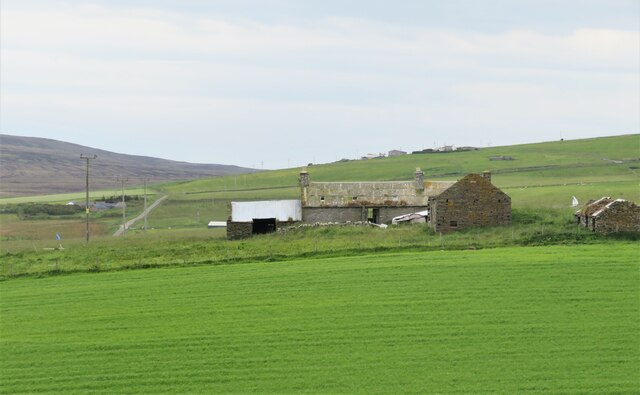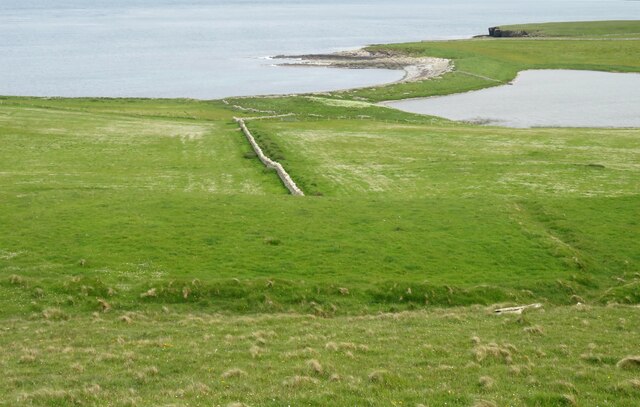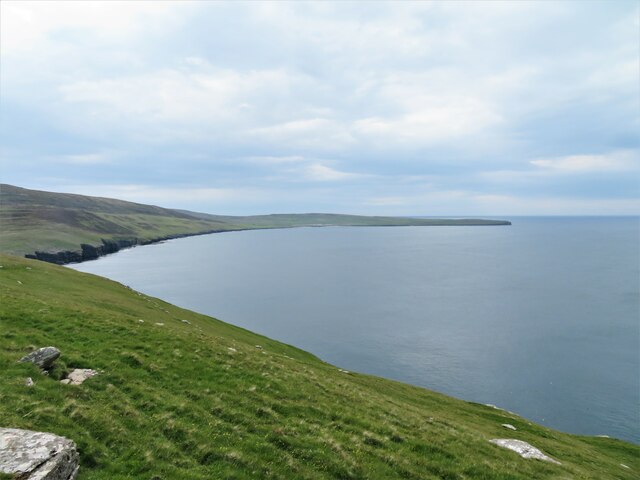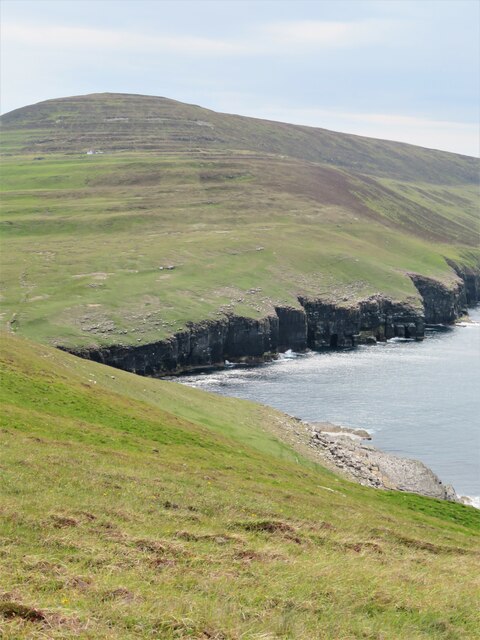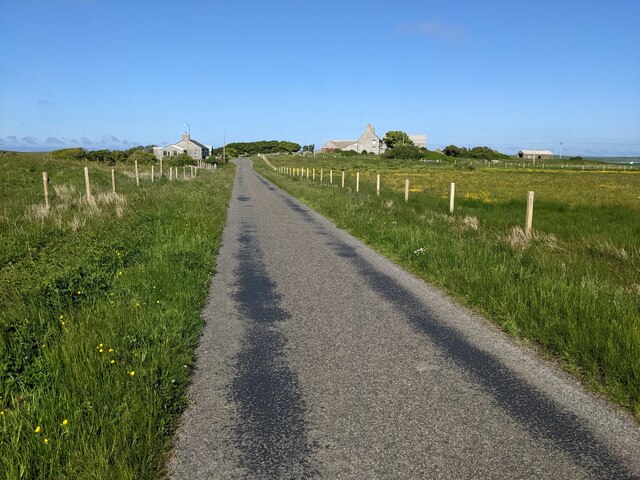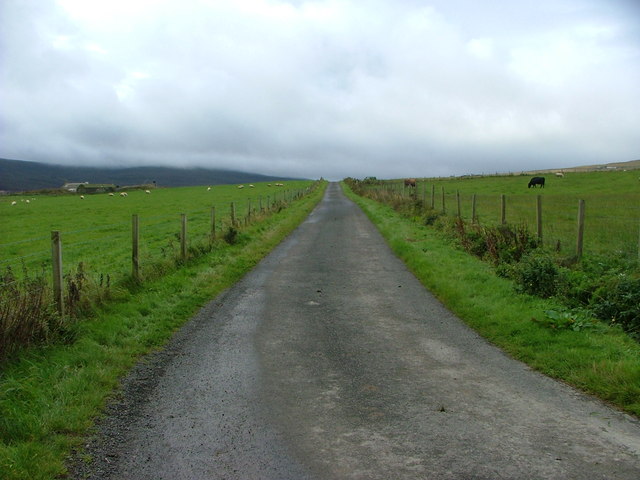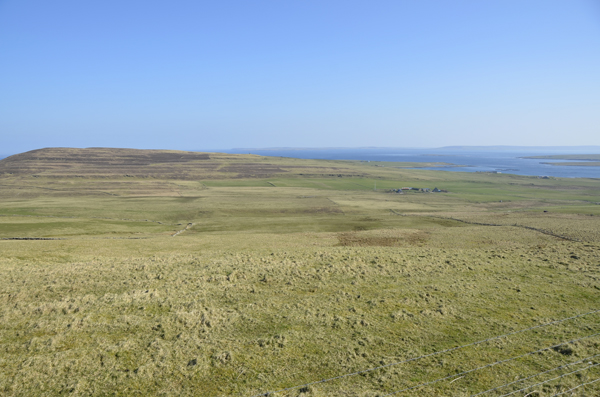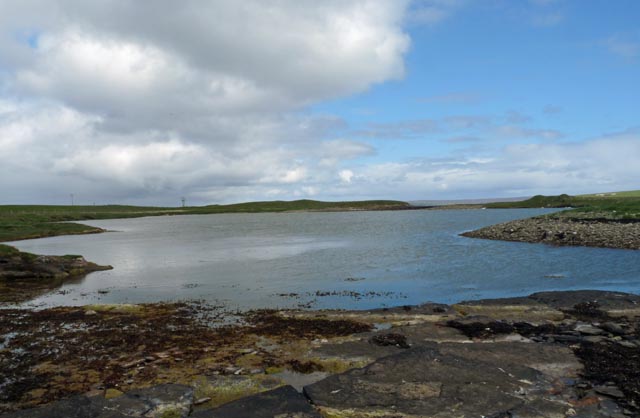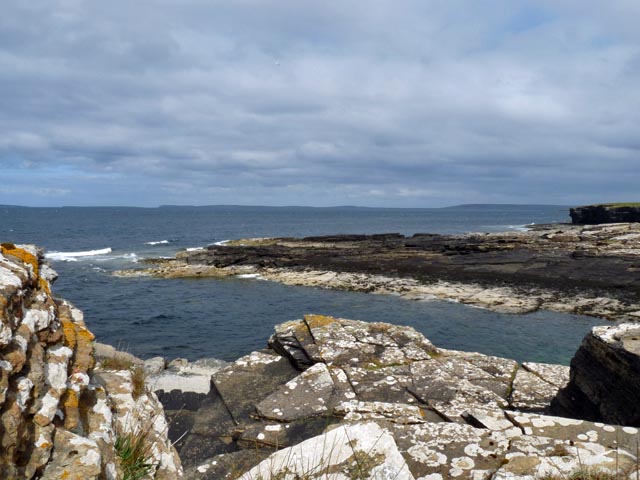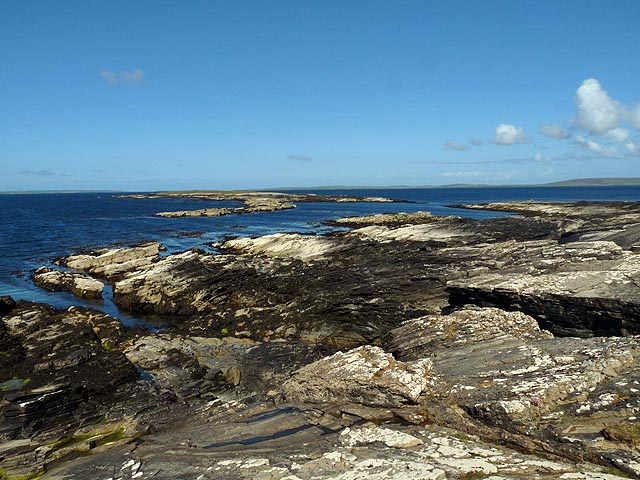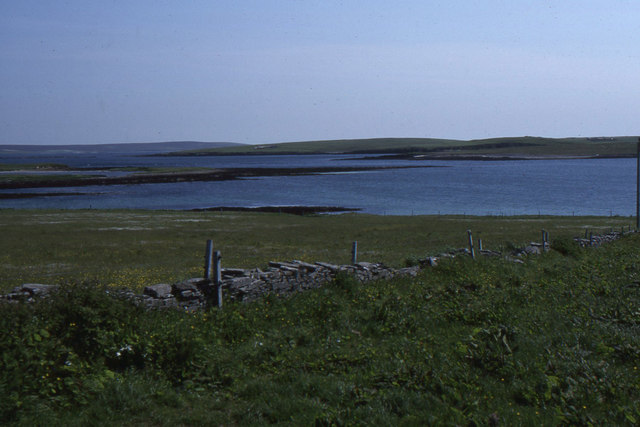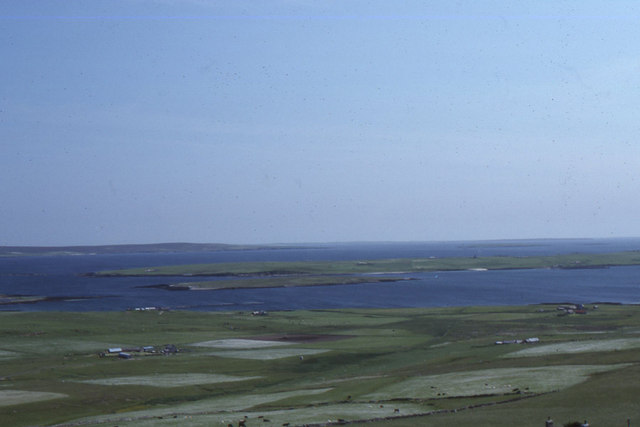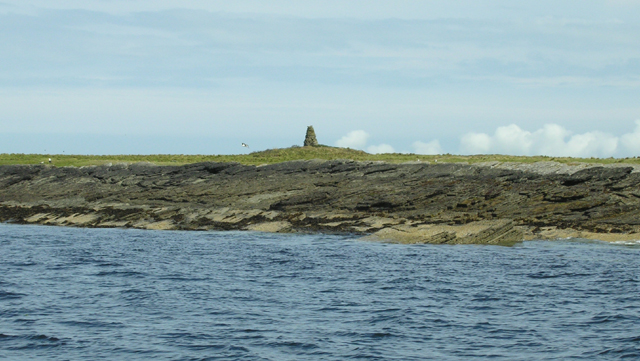Scock Ness
Coastal Feature, Headland, Point in Orkney
Scotland
Scock Ness
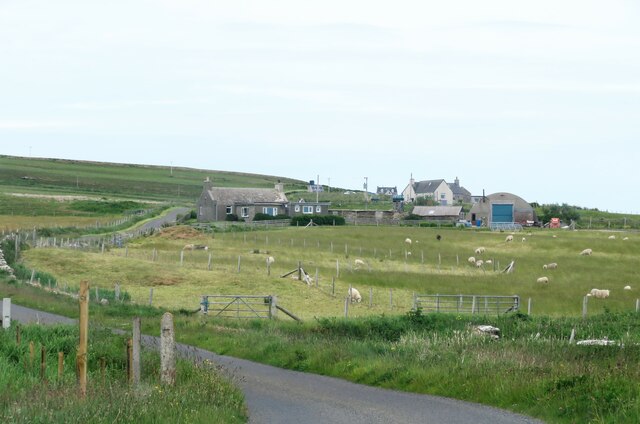
Scock Ness is a prominent headland located on the northeastern coast of the Orkney Islands in Scotland. Situated at the northernmost point of the island of Mainland, Scock Ness is known for its stunning coastal beauty and geological significance.
The headland is characterized by its rugged cliffs, which reach heights of up to 100 meters in some areas. These cliffs are composed of layered sandstone, revealing the geological history of the region. The exposed rock formations at Scock Ness provide valuable insights into the past environments and tectonic processes that shaped the Orkney Islands.
The headland is also home to a diverse range of wildlife. Seabirds such as fulmars, kittiwakes, and puffins can often be seen nesting on the cliffs, while seals can be spotted basking on the rocks below. The surrounding waters are rich in marine life, with dolphins and porpoises occasionally seen offshore.
Scock Ness offers breathtaking panoramic views of the surrounding coastline and the North Sea. On a clear day, visitors can see as far as the neighboring islands of Shapinsay and Stronsay. The headland is a popular destination for hikers and nature enthusiasts, with several walking trails that showcase the area's natural beauty.
In addition to its natural attractions, Scock Ness is also of historical importance. Nearby, the remains of a Neolithic settlement known as Skara Brae, a UNESCO World Heritage Site, provide a glimpse into the lives of Orkney's prehistoric inhabitants.
Overall, Scock Ness is a remarkable coastal feature that combines stunning natural scenery, geological significance, and a rich historical heritage, making it a must-visit destination for anyone exploring the Orkney Islands.
If you have any feedback on the listing, please let us know in the comments section below.
Scock Ness Images
Images are sourced within 2km of 59.176627/-2.9590891 or Grid Reference HY4532. Thanks to Geograph Open Source API. All images are credited.
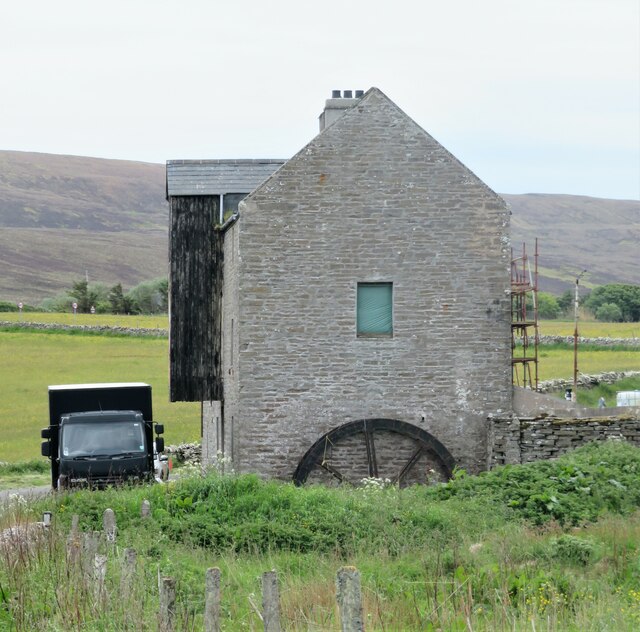
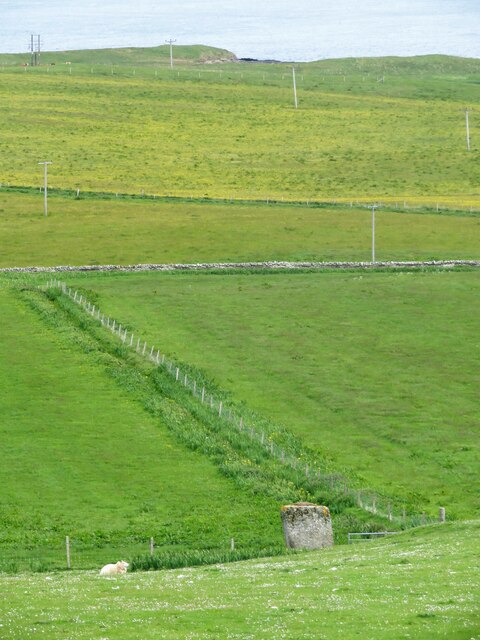
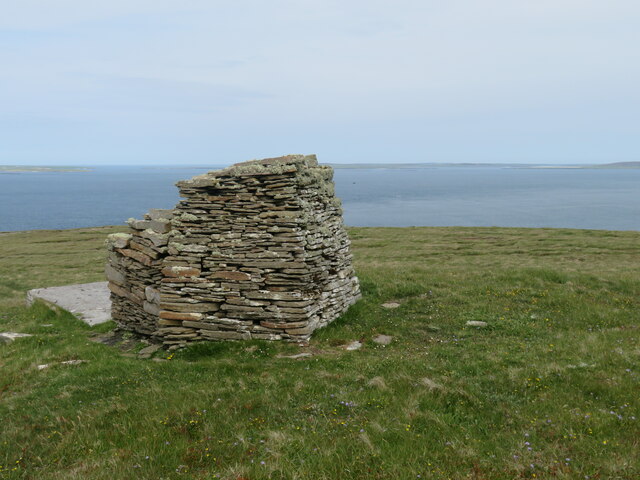
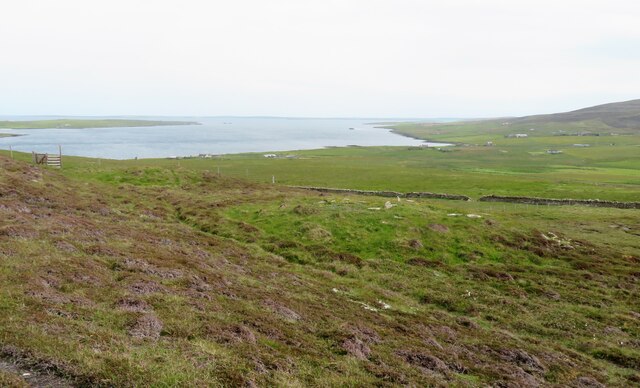
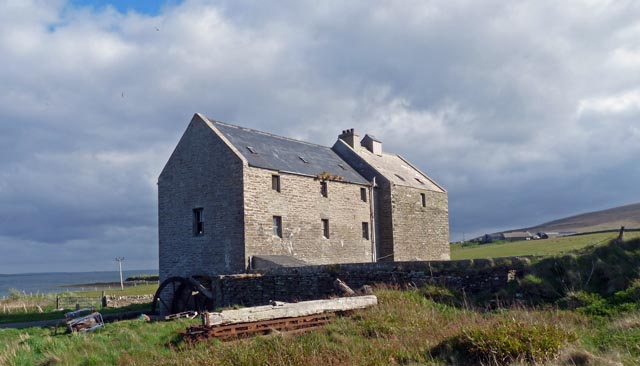
Scock Ness is located at Grid Ref: HY4532 (Lat: 59.176627, Lng: -2.9590891)
Unitary Authority: Orkney Islands
Police Authority: Highlands and Islands
What 3 Words
///inhabited.remote.weekends. Near Brinian, Orkney Islands
Nearby Locations
Related Wikis
Holm of Scockness
The Holm of Scockness is a small island in the Orkney Islands, between Rousay and Egilsay. It is currently used for grazing. Its name is Norse in origin...
Rinyo
Rinyo was a Neolithic settlement on Rousay in Orkney, Scotland. The site was discovered in the winter of 1837–38 on the lands of Bigland Farm in the north...
Kili Holm
Kili Holm is a tidal island in the Orkney Islands, linked to Egilsay. Unusually, like its neighbour Egilsay, it may have a partly Gaelic etymology, in...
St Magnus Church, Egilsay
St Magnus's Church is a ruined medieval church located on the island of Egilsay, in Orkney, Scotland. The site is recognized as the place of execution...
Nearby Amenities
Located within 500m of 59.176627,-2.9590891Have you been to Scock Ness?
Leave your review of Scock Ness below (or comments, questions and feedback).
